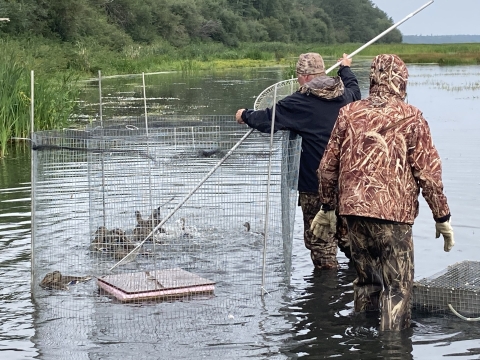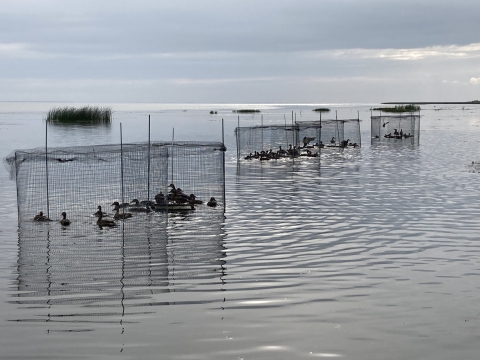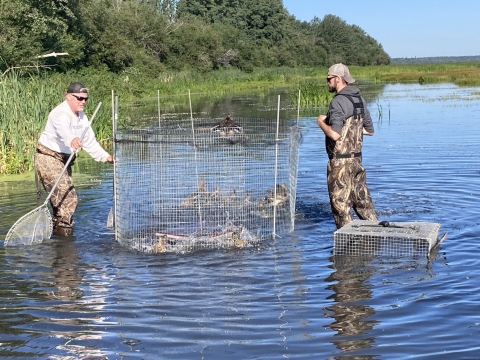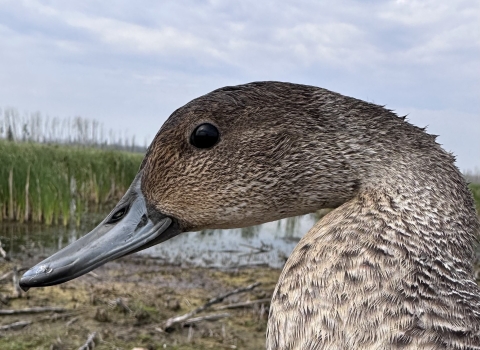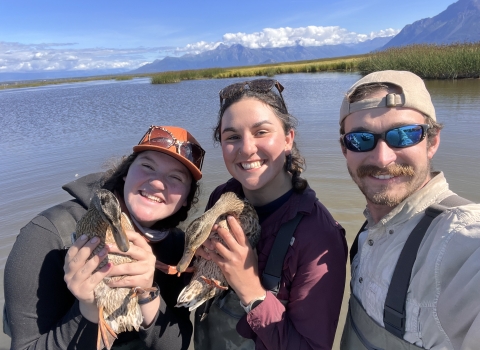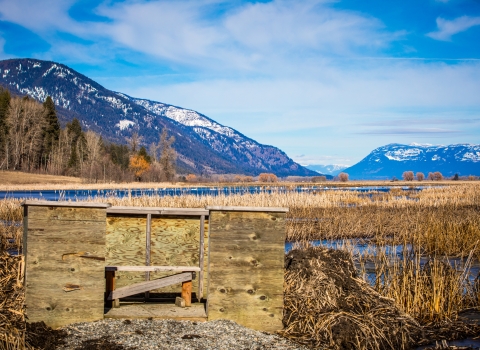It has been a few years since we banded at Utikuma Lake, the last time was in 2019 before the pandemic. But I must say, it was a welcome site to see this pristine lake again. We arrived on August 8th, and just as we last saw it in 2019, we witnessed thousands of molting divers and dabblers. This lake is finicky to band ducks on - success is always determined by the water level. Some years it is full and some years it’s a few feet down. The lower the lake, the better the success for banding. As we launched the boat the first morning on August 8th, I was very pleased to see the lake level was a few feet down. Utikuma Lake is a big lake, approximately 17 miles long at its’ longest east to west fetch and approximately 12 miles wide at its’ widest north to south fetch. There are always thousands of ducks using it to molt as it is rich in invertebrates, a necessary source of protein for their feather molt and regrowth. But when it is full, it is very difficult to find places with the right depth water to set duck traps.
Satisfying my every hope on the 1400 mile drive to the lake from Spearfish, SD, we found the lake low and I immediately felt trapping would be good. The first morning, joined by Chris Reighn and Reid Viegut, we ran our 16’ Lund semi-V vessel around the lake looking for concentrations of mallards. It did not take long to find some! We immediately started positioning traps in the lake and baiting sites with rolled barley. This is how we normally begin – we find mallards and put traps where they are. It is difficult, if not impossible, to attract ducks to a trap site, so you must find where the birds already are and put the traps there. After we found three sites that were suitable, we began setting the traps. This brings up the second finicky part of banding on this lake.
As I said, it’s a big lake. So often times, even when we find big concentrations of birds, they have lots of places to go! Once we disturb the birds by running around with the boat, setting traps and baiting, many times they do not like the disturbance and simply move to another location on the lake. Unfortunately, this is what happened at two of our sites. Fortunately, however, the mallards decided to hang around the one site for the free food! Since the lake is so large, we can’t just band anywhere because some days the wind gets to howling and 4-6’ whitecaps are just a bit too much for our little 16’ Lund! But as luck would have it, by the ducks staying by one of our sites, we were able to have a successful month. At that site we were able to place bands on 719 mallards, our target species. We were also able to band a few northern pintail, blue-winged teal, green-winged teal, redheads, and one bufflehead.
With our goal met and the sun setting on the 28th of August, we removed all the traps, stored all the equipment, and prepared to come home. It is always a bit sad to leave, particularly when you leave such a large beautiful lake, on which we did not see another boat or human being for the month. But, all good things must come to an end. It was a beautiful site leaving the lake watching thousands of birds taking flight that only a few short weeks ago were all in molt and flightless.
So until next year, may your fall flight be enjoyable in the blind and I hope you encounter one of the many bands we put on ducks here in Utikuma Lake, Alberta!
Disclaimer: All banding, marking, and sampling is being conducted under a federally authorized Bird Banding Permit issued by the U.S. Geological Survey’s Bird Banding Lab and the Bird Banding Office in Canada.


